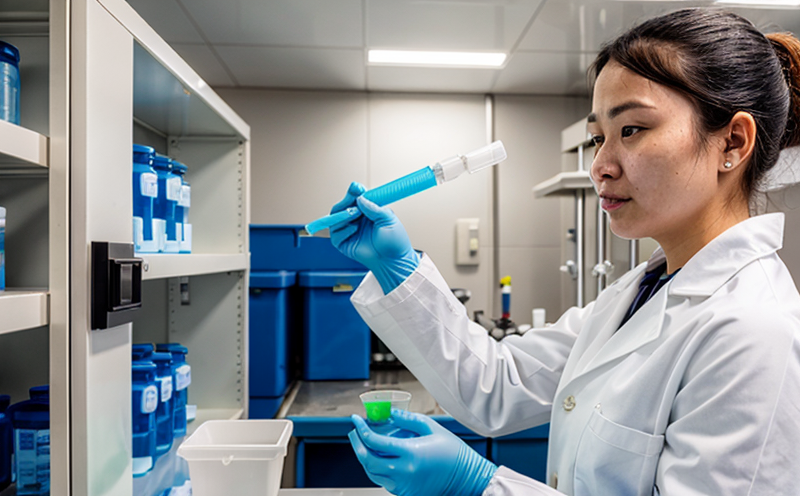USP Compressed Air Microbial Testing
The USP Compressed Air Microbial Testing is a critical procedure in pharmaceutical manufacturing environments to ensure that compressed air used for various processes meets the stringent microbial quality standards set by the United States Pharmacopeia (USP). This service ensures that any microorganisms present in the compressed air do not compromise product quality, safety, or sterility.
Compressed air is a vital component in pharmaceutical manufacturing. It is used for various processes such as filling, capping, and conveying materials, among others. Any contamination from microbes can lead to potential health risks, product recalls, and compliance issues with regulatory bodies like the FDA and EMA.
This testing ensures that compressed air is free from viable microorganisms, including bacteria, fungi, and yeast. The test involves collecting samples of compressed air at strategic points within the facility using specialized sampling devices and then sending them for analysis in a laboratory accredited to perform such tests.
The process begins with selecting the appropriate sampling sites based on the risk assessment of each area. Typically, these include areas where product contact surfaces are cleaned or sterilized, as well as those exposed to environmental conditions that could introduce contaminants. Sampling is conducted using ISO 14683:2019 compliant devices.
The samples collected are then transported under controlled conditions to the laboratory for analysis. The testing follows USP guidelines, which outline specific methods and criteria for microbial limits in compressed air used within a pharmaceutical facility. This includes both quantitative and qualitative assessments of microorganisms present in the sample.
Qualitative tests are conducted using culture-dependent or culture-independent methodologies to identify the presence of any microbes. Quantitative testing provides an estimate of the number of viable organisms per unit volume of air, which is crucial for determining compliance levels with USP standards.
The results of the test are reported in a comprehensive manner that includes details about the sampling locations, the methods used, and the findings. Compliance reports provide not only numerical data but also interpretative comments regarding potential sources of contamination and recommendations to address any issues identified.
Regular monitoring is essential for maintaining consistent product quality and compliance with regulatory requirements. By integrating USP Compressed Air Microbial Testing into routine facility maintenance practices, pharmaceutical companies can significantly reduce the risk of contamination and ensure that their products meet the highest standards of safety and efficacy.
Quality and Reliability Assurance
- Strict adherence to USP guidelines ensures consistent results.
- Regular sampling provides continuous monitoring of the air quality.
- Comprehensive reporting includes detailed analysis and recommendations for improvement.
The reliability of this testing process is further enhanced by using accredited laboratories that follow international standards such as ISO 14683:2019. This ensures that the results are accurate, repeatable, and reliable, which is essential for maintaining a high level of quality assurance.
Regular monitoring allows pharmaceutical companies to identify any potential issues early on, enabling timely corrective actions to be taken. This proactive approach not only maintains product safety but also helps in meeting regulatory requirements effectively.
International Acceptance and Recognition
The USP Compressed Air Microbial Testing is widely recognized and accepted across international borders. Its acceptance is due to its strict adherence to global standards such as ISO 14683:2019, which ensures that the testing process is consistent and reliable.
Pharmaceutical companies operating in different countries often find it beneficial to conduct this test because it aligns with international guidelines. This alignment helps ensure smooth compliance with local regulations and facilitates seamless trade between nations.
The recognition of USP standards also enhances the reputation of pharmaceutical companies, as adherence to such stringent testing protocols is seen as a mark of quality and commitment to safety.
Why Choose This Test
- Ensures compliance with USP guidelines.
- Reduces the risk of product contamination, recalls, and related costs.
- Provides critical data for maintaining cleanroom environments.
- Aids in identifying potential sources of microbial contamination early.





